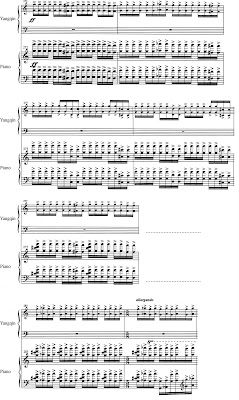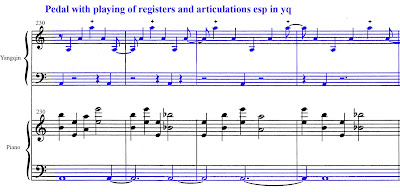This piece contained many dissonances brought about by note clusters, especially in accompaniments or between solo and accompanimental parts. Throughout the piece, the tonal centre is also blurred by the false-relations that exist between different voice parts. So I’m not sure if it makes sense to analyze the chordal progressions in this piece, because it felt like the composer is more concerned with the soundscape produced, rather than using any specific chord progression or the tonality. I think the presence of false relations were due to the linear as opposed to vertical thinking in the harmonic parameter. Throughout section A, the characteristic interval of a major 2nd and minor 7th are the two very predominant intervals used – contributing to the distinctive clashes. For instance in bar 1 – R.H. F# is set against F natural in the L.H. But it seems like there are a couple of underlying reasons for having that F#:

As mentioned above, the composer seemed to avoid successive semitonal movement within the same voice in section A. When chromatic movement is used, there are also notes in between to separate it. (see below for the chromatic voice leading)
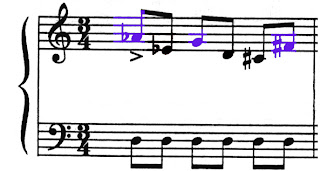
I notice that there is abundance of open 5ths and octaves (e.g. bs. 9, 43) apart from 4ths, which would have caused the piece to sound very bare, like The Sunken Cathedral by Debussy. Although both pieces are pentatonic in nature and filled with such open intervals, the atmosphere created is quite different – This concerto (esp. section A) do not sound as hollow as that felt in The Sunken Cathedral and it is interesting that we as listeners do not feel the awkwardness such bareness in this piece. Perhaps it is how the composer managed to ‘mask’ the bare sounding chords through the choice of registers..? Notice how the spacing between L.H. and R.H. were very close together (e.g. b. 117, 338 – R.H. octave is like an ‘echo’ of the L.H.).

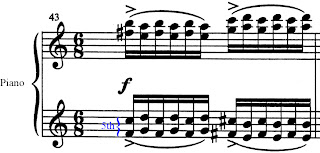

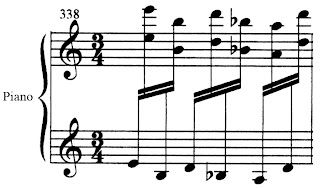
Sometimes even though the instruments are playing octaves in unison, for instance at bar 274 – 284, with range that spanned 3 octaves, the texture created is dense, not thin and empty. The spacing of chords, fortissimo and the quick tempo might be some contributing factors.
